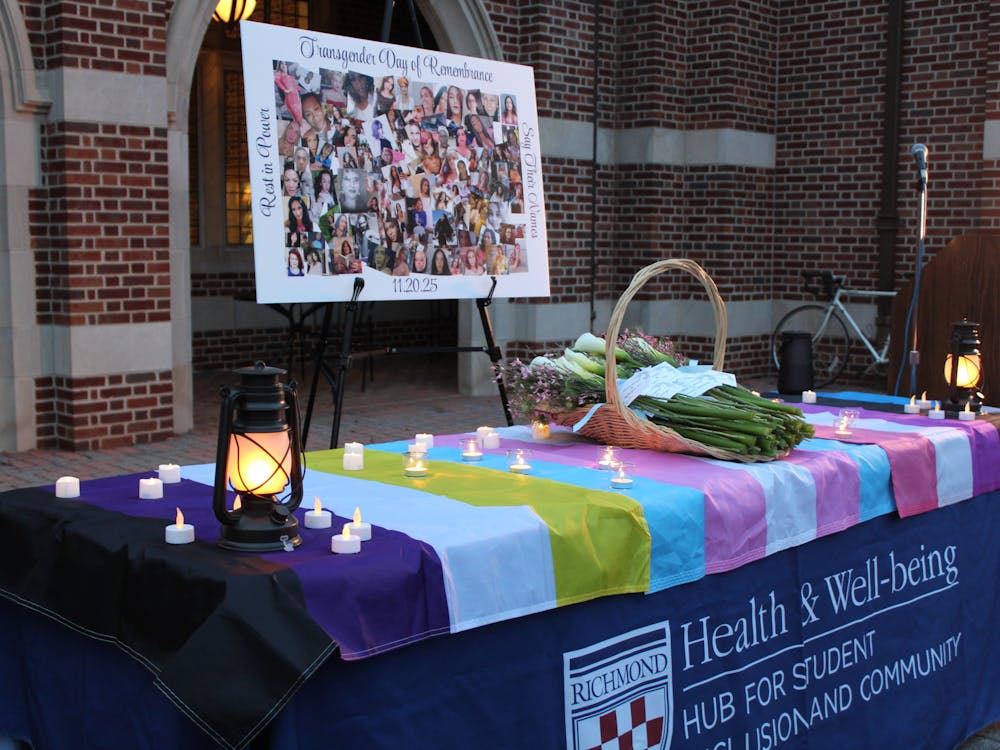The U.S. government’s decision to engage in military action is always emotionally charged. A variety of factors contribute to the tension that surrounds the high-level meetings in which such deliberations occur. Even in an age in which old norms relating to the making of war fade away, we need not look further than the lost American lives in Afghanistan and Iraq in order to understand the complexity of such decisions.
In his address to the nation on Sept. 10, President Obama announced that the United States would strengthen its offensive in Syria and Iraq, through increased airstrikes and military support for opposition fighters, in order to combat the extremist group known as the Islamic State – commonly referred to as ISIS.
In the speech, Obama described the organization grimly, listing some of the group’s most brutal exploits, including the beheading of two American journalists. In the final part of the president’s four-pronged plan for the region, he said, “We will continue providing humanitarian assistance to innocent civilians who have been displaced by the terrorist organization.” He paid particular attention to minority groups, who have been targeted as ISIS expands its operations, and said: “This includes Sunni and Shia Muslims who are at grave risk, as well as tens of thousands of Christians and other religious minorities. We cannot allow these communities to be driven from their ancient homelands.”
Obama’s commitment to continued humanitarian assistance in the region did not generate a massive amount of media attention. Rather the press focused on the military intervention, and the president recieved significant criticism. Some on the right wing criticized the wisdom of the strategy, including Frederick and Kimberly Kagan, who argued that the administration’s counterterror strategy misunderstands the more complex nature of ISIS. The left wing, too, attacked the president. Paul Kawika Martin of Peace Action said, “More weapons in the Mideast is not the solution, and is more like pouring fuel on a fire." I can understand the focus on military intervention. However, the near silence on the question of humanitarian intervention represents a failure to understand the totality of the U.S. operation.
Unlike military action, which functions almost as a rhetorical “third rail” in American politics, many are quick to blindly sign on to humanitarian assistance. The recent beheading of British aid worker David Haines by ISIS demonstrates that aid workers are most certainly not immune to the terrorism inextricably tied to an insurgency. As such, a more nuanced understanding of the potential harms associated with humanitarian intervention would not only result in smarter decisions regarding intervention, but also result in the creation, generally, of better foreign policy.
The term “humanitarian intervention” can mask the true nature of engagement overseas. In “Put the ‘Humanitarian’ Back in Humanitarian Interventions,” Jonathan Marshall said: “In times past, 'humanitarian intervention' brought to mind images of Red Cross trucks and nurses coming to the scene of a natural disaster to tend the afflicted. Today, American leaders use it to mean instead aerial bombing campaigns and proxy wars led by special forces to oust dictators or resist insurgents…” I attempt to make no argument here regarding the wisdom of such campaigns. However, regardless of our attitudes toward war, we ought to consider the fading away of such labels to be hugely problematic. Marshall describes the U.S. engagement in Libya as a particularly problematic blurring of labels: “While Libya burns, Washington belatedly tries to make things right by supporting 'English-language learning programs,' 'voter-education initiatives,' 'assessments of Libyan prisons,' and local 'structured dialogues.' But our total spending on such non-lethal aid comes to about the same as the cost of one Marine Corps F-35B jet."
The state’s decision to use lethal force is one that necessitates the navigation of political and, at least in principle, legal hurdles. Placing the power to make war in Congress’ scope of activity – although the Bush and Obama administration have taken actions that expand presidential authority in this area as a result of the broad strokes of the Authorization for Use of Military Force Against Terrorists – is perhaps the most obvious example of the structural obstacles designed to make for rational decisions regarding war, and to make such decisions rare. When American society allows humanitarian intervention to become a process that always denotes violent conflict, the process of making war becomes far less transparent, and could very well result in more U.S. troops in combat overseas.
As threats to the U.S. evolve, so too must our collective understanding of the nature of intervention. Even if we have that capacity to conceptually divorce humanitarian and military intervention, we must not and cannot exonerate the U.S. from its commitment to protecting its aid workers on humanitarian missions. As the Haines case tragically teaches, asymmetrical threats and insurgencies tend to convey an image of a bipolar world in which some are allies and many are enemies. To the ISIS insurgents, it did not matter that Haines was not pointing a gun in their direction – what mattered was that he came from the West.
Humanitarian aid workers’ assignments often put them directly in harm’s way. In fact, attacks on aid workers are a growing problem. Each year the United Nations sponsors World Humanitarian Day on Aug. 19, which seeks to raise awareness about the threats posed to aid workers. In a video message posted on the organization’s website, U.N. Secretary-General Ban Ki-moon said: “Last year, more humanitarian workers were kidnapped, seriously injured, or killed than ever before. … In recent weeks, dozens of humanitarians, including members of the U.N. family, have lost their lives in South Sudan and Gaza.” Valerie Amos, under-secretary-general for humanitarian affairs and emergency relief coordinator, said: “More than a third were victims of targeted attacks or crossfire while delivering assistance.” Reporting on a recent report by Humanitarian Outcomes, The Guardian said that 2013 “was the most dangerous [year] on record for humanitarian workers, with 155 killed, 171 seriously wounded, and 134 kidnapped … three-quarters of them [251 separate attacks] took place in just five countries: Afghanistan, Syria, South Sudan, Pakistan and Sudan.” This snapshot demonstrates the necessity of considering the risks associated with humanitarian intervention.
The American public must not stand by idly and allow “humanitarian” intervention to serve as a cover for military engagement. It thus follows that just like checks are built into the American system of government in order to prevent the government from recklessly waging war, the public, Congress and the president ought to consider critically the risks associated with humanitarian intervention, and when they decide to intervene, to ensure the safety of these workers representing the U.S. abroad. American aid workers are tremendously important, helping to reduce human suffering and build peace in some of the world’s most troubled regions. Understanding the risky nature of humanitarian intervention would result in better foreign policy decision-making, because those in charge would have a clearer picture of the nature of an operation overseas. As Americans, it is our responsibility to our foreign aid workers, and to all the Americans representing our country overseas, that we do not blindly put them in danger, and that we ensure that they can safely carry out the incredible work to which they have devoted their lives.
Contact reporter Ryan McEvoy at ryan.mcevoy@richmond.edu
Enjoy what you're reading?
Signup for our newsletter
Support independent student media
You can make a tax-deductible donation by clicking the button below, which takes you to our secure PayPal account. The page is set up to receive contributions in whatever amount you designate. We look forward to using the money we raise to further our mission of providing honest and accurate information to students, faculty, staff, alumni and others in the general public.
Donate Now


